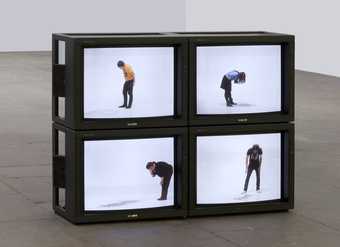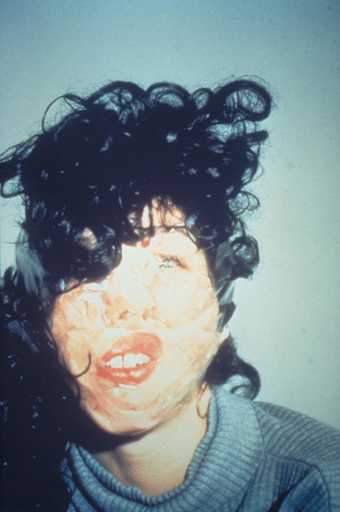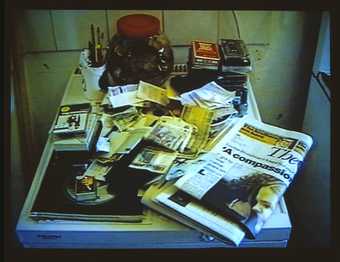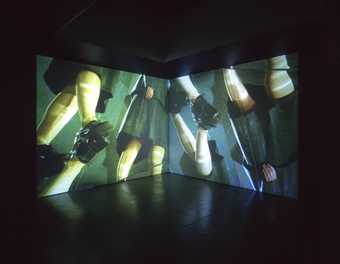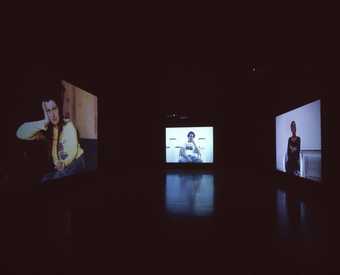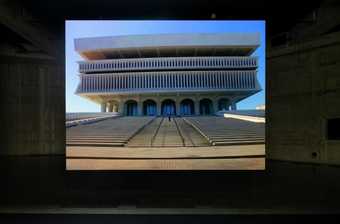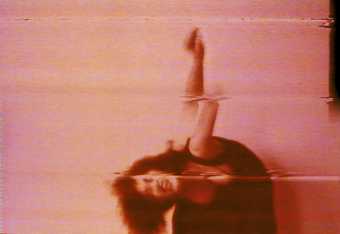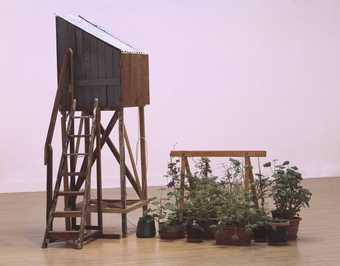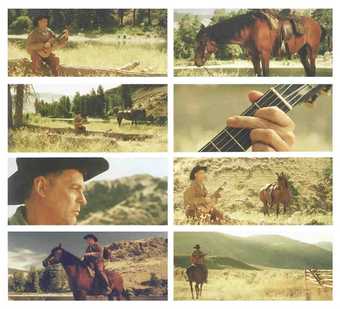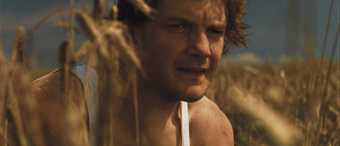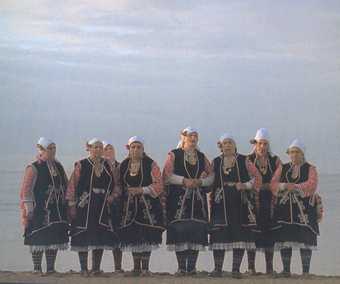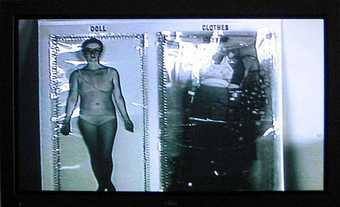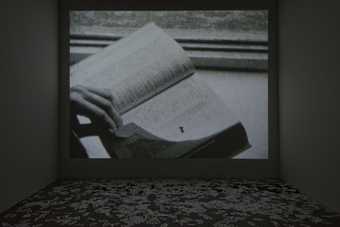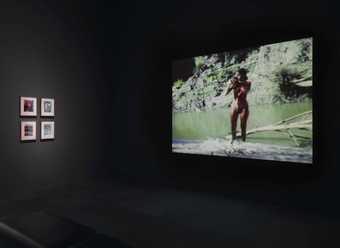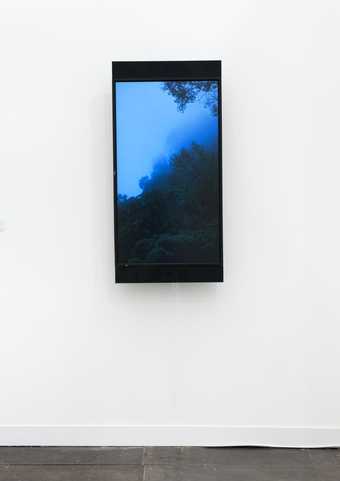
Not on display
- Artist
- Lucy Gunning born 1964
- Medium
- Film, super 8 mm, shown as video, monitor, colour and sound
- Dimensions
- Duration: 7 min., 13 sec.
- Collection
- Tate
- Acquisition
- Presented anonymously 1997
- Reference
- T07315
Summary
The Horse Impressionists is a short, single channel video in colour with sound. It comprises footage of five women – Lou Birks, Rachel Ind, Penelope McGhie, Tansy Edgerton and Marie (surname not revealed) – doing impressions of horses. The video was originally shot on Super 8 film and has been edited and transferred to VHS in a loop of seven and a half minutes. It was produced in an edition of eight. Tate’s copy is the first in the edition. The video is shown on a medium sized monitor on a stand. Gunning placed advertisements in newspapers to find women to perform in her video. She has explained:
I’d always been interested in the relationship between women and horses, and as a child I spent a good many hours pretending to be a horse, and just from talking to other people, discovered that they did and it was definitely a thing that little girls did and not little boys ... [I] quite enjoyed looking at it from the point of view of thinking well who is a horse and who’s riding a horse in the whole thing ... I advertised for people to do ... one or the other ... [and got] more replies than people I actually filmed. I edited it down ... by speaking to people and finding out whether it was something they did anyway or something that having seen my advert they thought well I’ll have a go at that ... it was very important that it was important to them, that it was something that they actually did and had since childhood.
(Quoted from unpublished interview with Clare Finlater in April 1996, for the Arts Council Collection, South Bank Centre.)
Gunning filmed the women in a variety of outdoor locations, mainly parks, apart from one echoing, indoor space. Each woman was filmed differently according to Gunning’s intuitive response to her rather than following a pre-existing plan. The women all make similar sounds but use very different body language. The first covers her mouth as she neighs and whinnys. Footage of her is mainly of her face and hands, alternately laughing and smiling at the camera and making horse noises. The second impersonation is more physical. This woman trots around, raising her hands and arms into the air and shaking her head like a horse rearing up and neighing. Frequently she closes her eyes as though deep in concentration. The third woman, clearly more camera shy, walks in and out of the frame making horsey noises but barely displaying any physical sign of this. Finally her head is filmed against a white backdrop, as she whinnies for the camera. The camera cuts to the feet of the fourth woman dancing around on a concrete floor. This woman trots around pretending to be a horse and a rider at the same time. As she shakes her head and raises her feet her hands hold imaginary reins. She makes the typical horse rider’s clicking ‘gee-up’ noise in between whinnying, neighing and laughing. The fifth woman simply stands against a wall of bricks, shyly smiling at the camera in between making the horse noises. The noises made by all of the woman are astonishingly true to life and, for anyone not practised in making such noises, extraordinarily skillful. They are comic, both for the performer and the viewer. Loud and insistent, they have an uncanny, hysterical edge.
Gunning initially studied sculpture but became frustrated by its static nature and began working with performance and physical theatre during her MA at Goldsmiths’ College London (1993-4). In her first video, made when she was still a student, Climbing Around My Room 1993 (Arts Council Collection, London and Centre Georges Pompidou, Paris), a woman in a red party dress carefully climbs around the walls of a room, balancing on shelves, hooks and furniture without touching the floor. Common to both these early works is the theme of acting out childhood games or fantasies, coupled with stereotypical feminine associations. Shown on monitors, these early videos have a sculptural presence reminiscent of such video works by American artist Bruce Nauman (born 1941) as Good Boy Bad Boy 1985 (Tate T06853).
Further reading:
British Art Show 5, exhibition catalogue, South Bank Centre, London 2000, pp.62-3
Kate Bush, ‘Animal Instinct’, Frieze, issue no.21, March-April 1995, pp.42-3, reproduced (colour) p.42
Lucy Gunning, exhibition catalogue, Chapter Arts Centre, Cardiff 1998, pp.6, 8, 15, reproduced (colour, detail) pp.12-13
Elizabeth Manchester
August 2002
Does this text contain inaccurate information or language that you feel we should improve or change? We would like to hear from you.
You might like
-
Martin Creed Work No. 837
2007 -
Gillian Wearing CBE Confess All On Video. Don’t Worry You Will Be in Disguise. Intrigued? Call Gillian Version II
1994 -
Tracey Emin Tracey Emin C.V. Cunt Vernacular
1997 -
Jane and Louise Wilson Gamma
1999 -
Sam Taylor-Johnson OBE Killing Time
1994 -
Shirin Neshat Soliloquy
1999 -
Pipilotti Rist I’m Not The Girl Who Misses Much
1986 -
Tracey Emin The Perfect Place to Grow
2001 -
Rodney Graham How I Became a Ramblin’ Man
1999 -
Jesper Just Bliss and Heaven
2004 -
Bethan Huws Singing for the Sea
1993 -
Cindy Sherman Doll Clothes
1975 -
Ewa Partum Active Poetry
1971–3 -
Ana Mendieta Blood Feathers
1974 -
Melanie Smith Xilitla
2010

